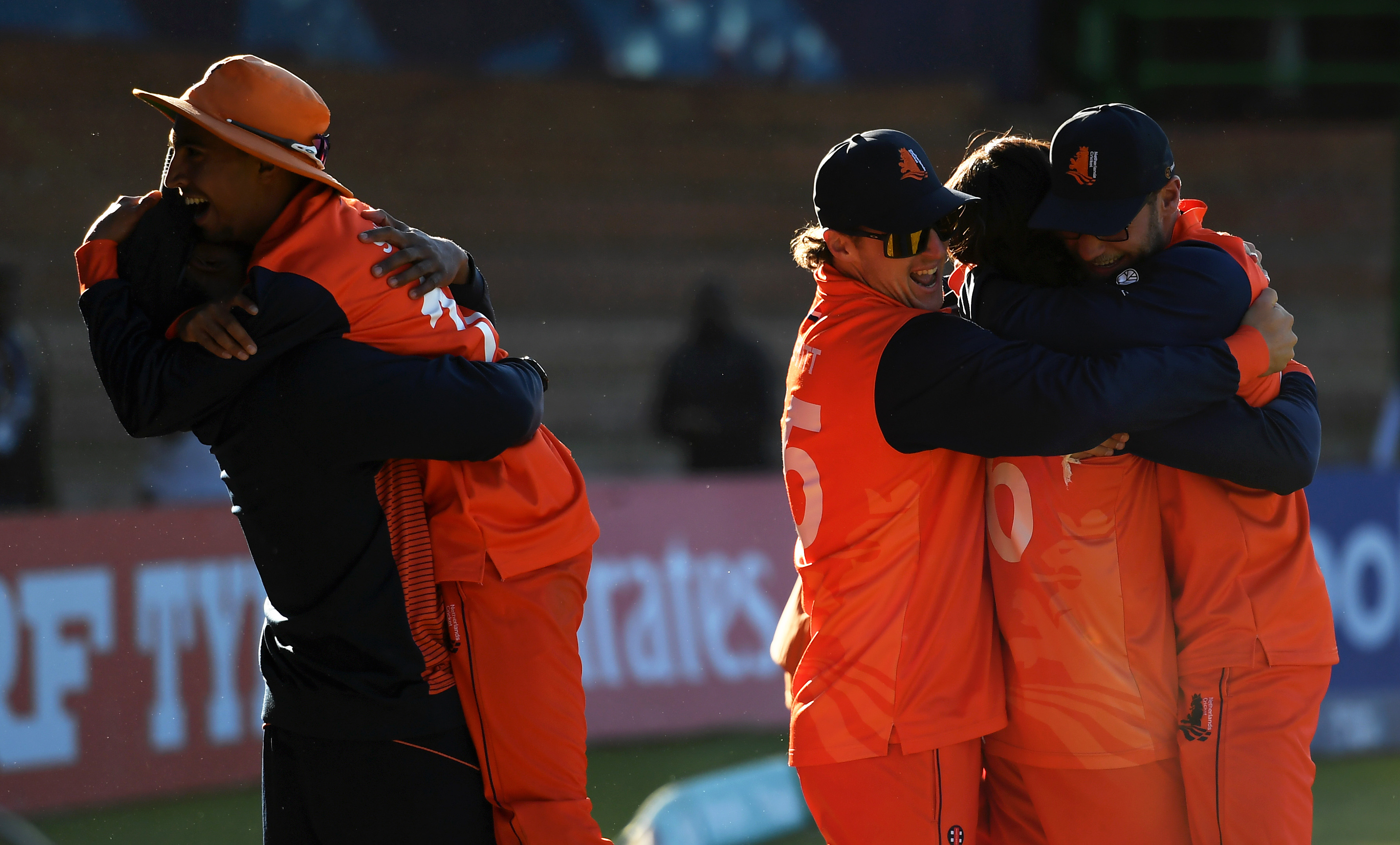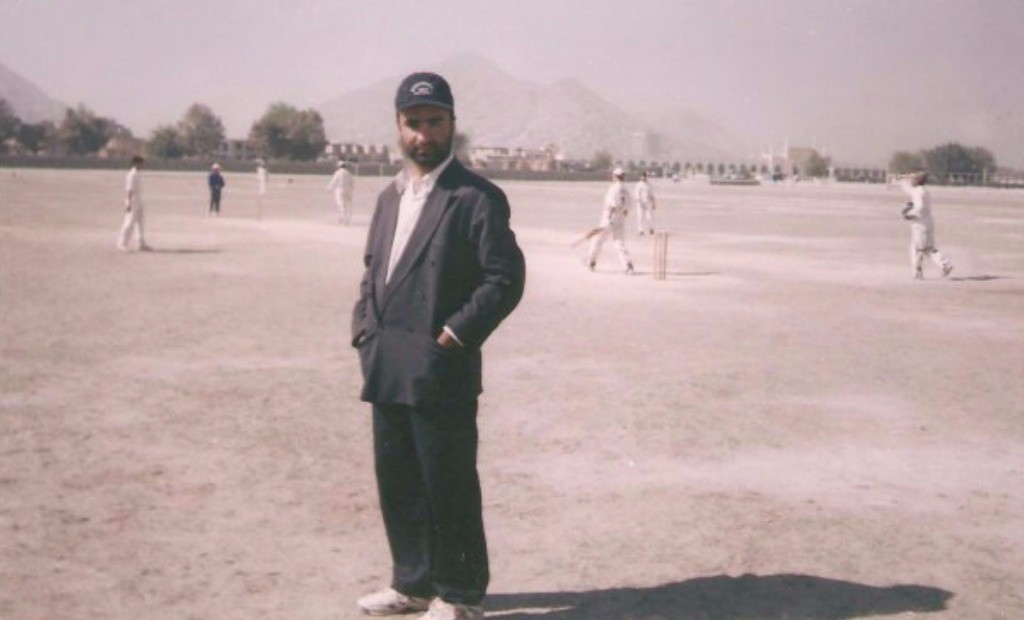For a change of pace—and mood—we look at two delightful underdog teams in this World Cup. These are the backstories of how Afghans and Dutchmen came to play cricket—and discovered they were rather good at it.
Researched by: Rachel John & Aarthi Ramnath
First, a bit about their World Cup wins
Afghanistan and the Netherlands earned the love and respect of both crowds and rivals this year. Both were giant-killers who offered a lesson in humility to the big boys.
Afghanistan: The team has won three games—their best World Cup performance ever. When they beat defending champs England by 69 runs it was their first victory in eight years. Then they went on to wallop Pakistan in an astonishing eight-wicket victory. Then did it again with Sri Lanka—winning by seven wickets this time. The unstoppable Afghan juggernaut may well end up in the semi-finals—or even the finals?
The mastermind of their success: former England batsman Jonathan Trott. Quote to note:
The clinical manner of their chase and the comprehensive nature of their victories belie their stature as a so-called 'minnow' of the game and their fans have demanded their wins should no longer be termed as 'upset'.
Celebration of note: Victory over Pakistan was especially sweet. Their tally against their neighbour was a dismal 0-7 going into that game. Assistant coach Raees Ahmadzai brashly declared: “India is number one in Asia, but the day is not far when Afghanistan will dislodge Pakistan as number two in the subcontinent. So the Chennai win wasn’t just a big thing for the team, but it was the best day in the history of Afghanistan.” Even more remarkable: the scenes of celebration in Kabul—a city that hasn’t had much reason to rejoice in recent years:
Hello, Netherlands! Everyone was a bit surprised when the team qualified for the World Cup—beating West Indies, no less. And the win against Scotland that clinched their qualification was just as impressive:
Edwards' team needed to shoot down the target of 277 inside 44 overs. With 170 more needed in 20 overs, and then 102 in the final ten, Dutch hopes were hanging on de Leede, who had taken a five-for earlier in the game. The son of former Dutch allrounder and three-time World Cupper Tim, de Leede then proceeded to make the world sit up, with a nerveless century to take Netherlands through.
You can see how ecstatic they were with that win:

Reminder: The Netherlands is not a fully recognised member of the International Cricket Council—and is the only associate that qualified for the tournament. That said, this is their fifth WC outing—so they’re not exactly rookies.
Going Dutch at the World Cup: Although they are unlikely to qualify for the semis, the team has chalked up two big wins. They narrowly defeated South Africa by 38 runs in a rain-affected game—which is when everyone sat up and started paying attention. They went on to score a confident 87-run victory over Bangladesh.
But, but, but: It hasn’t all been roses. Poor Bas de Leede’s spell in the Australia match was record-breaking for all the wrong reasons. He conceded a staggering 115 runs—the most ever in an ODI World Cup. His father Tim de Leede—also a reputed cricketer in his time—was in the stands to witness the debacle. He sportingly said afterwards: “Today, my son bowled quite low, but that is the nature of cricket. Maxwell batted an excellent innings. Played.” You can see de Leede in happier times below—winking at Pakistan bowled Haris Rauf after whacking him for a six:
Ok, origin story #1: Afghanistan
Unlike India, Pakistan and Bangladesh, the country did not inherit a colonial legacy of cricket. Probably because the British barely held on to Afghanistan—despite fighting three wars. The Afghans discovered cricket in the 1980s in refugee camps in Pakistan—where they fled due to the Soviet occupation. Pakistanis’ cricket mania proved far more infectious than that of the burra sahibs.
Meet Taj Malik: He is rightfully considered the father of Afghan cricket. He learned the game at a refugee camp—and started a local Afghan team. His family was poor—with barely enough to eat—stranded in a slum without sewage or electricity. Here’s how Malik and his buddies wangled a bat and ball:
One day, like many others, Taj had skived off school to play and had persuaded his brothers and friends to do the same. They only had one old bat and it broke. As they were despairing they saw a funeral procession go by – the pitch was next to a graveyard. Taj came up with a plan: he persuaded the players to join the mourning, aware that often those that attended funerals were given a small financial gift. Taj and the players did their part, crying and sobbing when needed and when the funeral came to an end each of them was given 20 rupees (about 15 pence). It wasn’t much, but when they combined their money it was enough to buy two brand new bats.
Finally, a national team: Soon Malik was dreaming of building a national team—going from one camp to another to recruit players—to the Afghan Cricket Club. But he would have to wait to return to Kabul—after the ouster of the Taliban—to build a national team. That was in 2001. You can see Malik in the early days in Kabul below:

The team qualified for the World Cup T20 in less than a decade—solely on grit and hard work. Mohammad Nabi—who later became captain—says:
We had to do it or die, as many of us came from poor family backgrounds and we just could not go back, but only forward. It was amazing to hear the national anthem at the World Cup, and I remembered playing cricket in the refugee camps while I was playing [at the tournament in Australia and New Zealand].
Malik and his peers did a lot—setting up academies for a “foreign sport”—giving hope to kids rebuilding a war-torn country. They played the first ODI World Cup in 2015—and officially started playing Test matches in 2017.
Here comes the Taliban: When the Taliban returned to power in 2021, the players fled the country. During its first regime, the mullahs had banned the sport. This time around, it is one of the few sports still permitted in the country—though not for women, of course. But most of the players are now residents of the UAE—to be able to participate in international tours. It’s pretty hard to get a visa if you live in Afghanistan these days. Sanctions against the Taliban also make it hard to access ICC funds—or get brand sponsors. And yet here they are, playing and winning—and with attitude as you can see in the photo of Rashid Khan below:

Origin story #2: The Netherlands
The English were far more successful in passing on their love for cricket to the Dutch—than the indifferent Afghans. It was brought to the country by English traders in the 18th century—or Dutch traders who had visited England:
Cricket was observed being played in the Netherlands in the 1780s by an English traveller during a visit to Scheveningen. Since Thomas Hope, a merchant from Amsterdam also noted that cricket was an important recreational activity of the Dutch community in Rome in the 1790s, it seems reasonable to infer that the game must have been established in the Netherlands by the late 18th century, at least among a small group of the population.
The first cricket clubs: Cricket took root primarily as an elite sport played in posh private schools:
With its gentle rhythms, emphasis of intellectual acumen alongside physical prowess, cricket was considered the perfect game in a school where the cream of the Dutch society, including King William III, sent their children.
These rich men became members of the first cricket clubs. But they were walloped by a visiting English club in 1881—losing by an innings despite fielding 22 players. The reason:
This was because unlike in British colonies, where the English imposed their rules of the game, cricket in the Netherlands developed far more randomly. Different clubs followed their own rules and ideas of the game. “For instance, the Deventer club adopted a gentlemanly approach … Scoring behind the wicket was considered unfair and given the derogatory label ‘Spanish hitting’.
Also this: “Most of the bowling was underarm and matches were played on any reasonably level piece of ground that could be found. Wickets were rarely prepared and therefore extremely rough and dangerous.”
Dawn of ‘proper’ cricket: The Nederlandsche Cricket Bond (NCB) was founded in 1883 in order to ensure “proper administration” of the game—and avoid further such embarrassments. But after a brief “golden era” after World War I, the sport fell out of favour and into obscurity—overshadowed by the far more democratic football. But the Dutch cricket team persevered—often playing international teams that were touring England. Heck, they even beat the Aussies in 1964 by two wickets:
A Dutch renaissance: The path to success has not run smooth. The team made their World Cup debut in 1996—only to lose all five matches. The country even hosted one of the World Cup matches in 1999. The team entered a prolonged slump starting in the early 2000s—until a few years ago. To be fair, Dutch cricketers have made the best of very limited resources. In the run up to the 2003 World Cup, the team didn’t even have uniforms:
Dutch players were given tracksuits after the country's cricket federation (KNCB) had got their hands on some which were surplus from the Netherlands Olympic team that travelled to the Sydney Games three years previously. A clever idea on the face of it, but with many earmarked for volleyball players most of the cricketers were drowning in them.
But the players now have more resources, support and training—and it shows. At the 2022 T20 World Cup, the Netherlands slayed South Africa—and finished above Bangladesh and Zimbabwe. It also earned a direct slot for the 2024 T20 World Cup.
A new kind of cricketer: The sport has become far more inclusive over the decades—and been better for it even though a number of players hold day jobs. For example: Teja Nidamanuru who is a product manager at a tech company—or skipper Scott Edwards who trained as an electrician.
But that's also because some can’t live on cricket and fresh air. Like Paul van Meekeren—who went viral during the pandemic when he tweeted: "Should've been playing cricket today. Now I'm delivering Uber Eats to get through the winter months!" That said, days when players would have to quit their jobs to play World Cups are a distant memory:
Luckily most of the guys involved today are making some sort of a living through cricket. They can, to quote ex-Netherlands captain Peter Borren, pay the rent through cricket. Not make much money, but at least pay the rent.
The Netherlands may not reach the semis in this tournament, but the men have plenty of reasons to take a bow—like Paul van Meekeren lol:

The bottomline: Like they say: No guts, no glory!
Reading list
ESPNCricinfo and Indian Express (paywall) are the best on the history of Dutch cricket. BBC News has a lovely profile of Bas de Leede and his dad—which also gives you a sense of how the game has evolved. Cricket Monthly is best on what’s changed with this Dutch team. BBC News and Al Jazeera offer a broad overview of how Afghans fell in love with cricket. But for an in-depth look, check out Tim Albone’s book ‘Out of the Ashes’.


 souk picks
souk picks